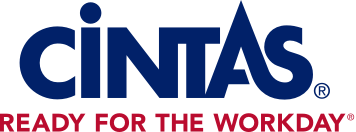Workplace peace of mind: How eyewash stations help safeguard your employees
In environments where chemicals and hazardous materials are used, eyewash stations play a pivotal role in your employees’ safety. Knowing a critical incident could occur at any time, it’s essential that you establish and practice proper safety protocols. Are your facilities equipped for emergencies and your people prepared to act?
Let’s look at the health hazards your employees face, eyewash safety guidelines you must follow and a case study about eyewash safety. From this information, you’ll gain peace of mind knowing you have or can develop an employee-first safety plan backed by Cintas.
Injury impacts on people and businesses
Corrosive or hazardous materials, including chemicals or small particles, can cause serious injury – quickly. According to the U.S. Bureau of Labor Statistics 2020 report, more than 18,500 employees experienced eye-related injury or illness in the workplace. Employees exposed to harmful substances or environments accounted for 4,830 cases.
Those injuries impact workers, their families, coworkers and businesses collectively. Work-related eye injuries remain a significant burden on the U.S. population, accounting for more than 475,000 missed days of work and $80 million in lost wages over a 10-year period (2011-2020), as reported by the National Library of Medicine.
The ramifications of eye accidents are far-reaching. They include:
- Employee medical expenses
- Workers’ compensation claims
- Lawsuits against the company
- Labor-force reduction
- Replacement training
- Missed safety goals
- Low employee morale
- Hardships incurred by the injured person’s family
You can help mitigate injury and possibly avoid these issues by adding The Safety Director® Self-Contained Emergency Eyewash Station from Cintas to your safety plan.
Industry standards and protocols
Understanding and maintaining industry safety standards surrounding eyewash stations is a mandatory step to safeguard your workforce.
The Occupational Health and Safety Administration, Standard 1910.151(c), notes: Where the eyes or body of any person may be exposed to injurious corrosive materials, suitable facilities for quick drenching or flushing of the eyes and body shall be provided within the work area for immediate emergency use.
Proper placement and use of eyewash facilities, equipment or stations is specified in ANSI/ISEA Z358.1-2014 (R2020). This standard highlights key considerations and important requirements when preparing an eyewash safety program.
A component of this standard deserving primary attention is installation. As stated in the ANSI standard, the eyewash station is positioned so that it is highly visible and accessible, being in locations that take no more than 10 seconds to reach. Your Cintas representative can assist when selecting the location of your Safety Director® Self-Contained Emergency Eyewash Station.
Eyewash system options
Two types of emergency eyewash stations are typically utilized: plumbed stations (attached to a building’s plumbing) and self-contained stations (no plumbing attachments).
A self-contained eyewash station can be conveniently placed where required. Each self-contained station must fulfill ANSI safety guidelines. Your eyewash stations should allow for the following:
- Activate in one second or less
- Flush both eyes simultaneously
- Be hands free
- Offer valves with constant flow
- Have a flush rate of 0.4 gallons per minute
- Flush for 15 minutes
- Be located within 10 seconds of hazard
- Be located within a clear path
- Include a highly visible sign identifying the station
The Safety Director® Self-Contained Emergency Eyewash Station from Cintas quickly activates and flushes both eyes at once with over 15 minutes of continuous flushing. The highly visible (bold green) eyewash station also makes it easy for employees to locate.
Cintas emergency eyewash station saves pest control employee from serious eye damage
Safety is a top priority for Houston-based Preventive Pest Control due to employee exposure to hazardous products. Workers are responsible for the safe transportation, storage, and handling of pesticides and other hazardous materials. Safety guidelines are in place, personal protective equipment is employed and trucks are equipped with mobile eyewash units. However, the company did not have an eyewash station in its warehouse where hazardous materials are stored.
Preventive Pest Control implemented Cintas’ The Safety Director® Self-Contained Emergency Eyewash Station. “Cintas worked with us to coordinate the installation at our convenience, and they walked us through how simple it is to use,” said James McMullan, Manager for Preventive Pest Control’s Houston West location.
About a month after Cintas installed the eyewash station, a Preventive Pest Control technician’s eyes were exposed to a hazardous product. That employee used The Safety Director® Eyewash Station. “The urgent care physician said because the technician was able to flush his eyes out immediately after the incident, there was no damage to his eyes,” stated McMullan.
